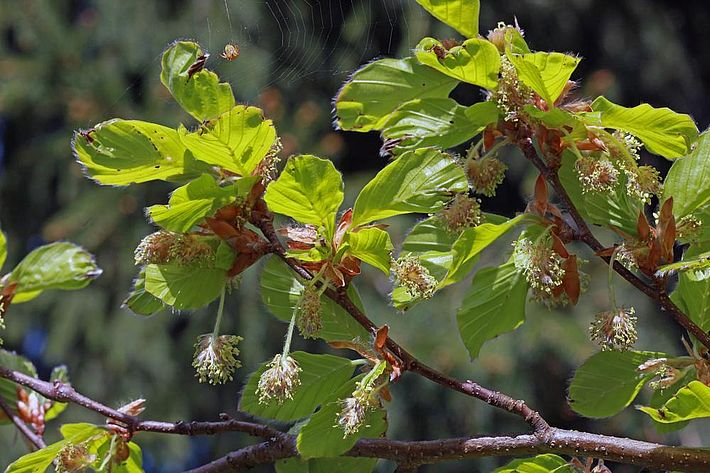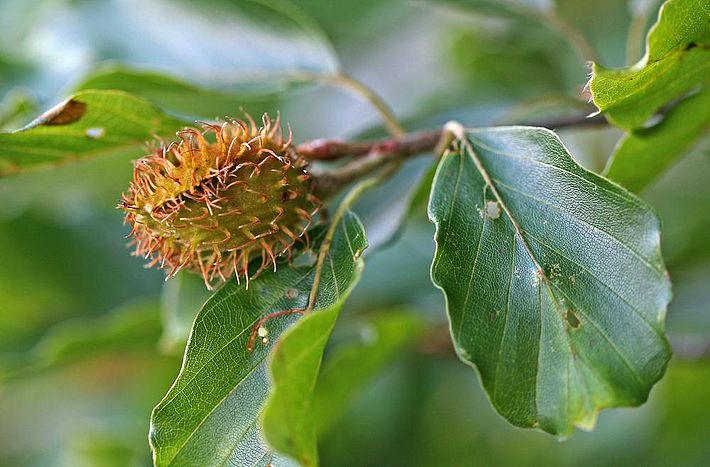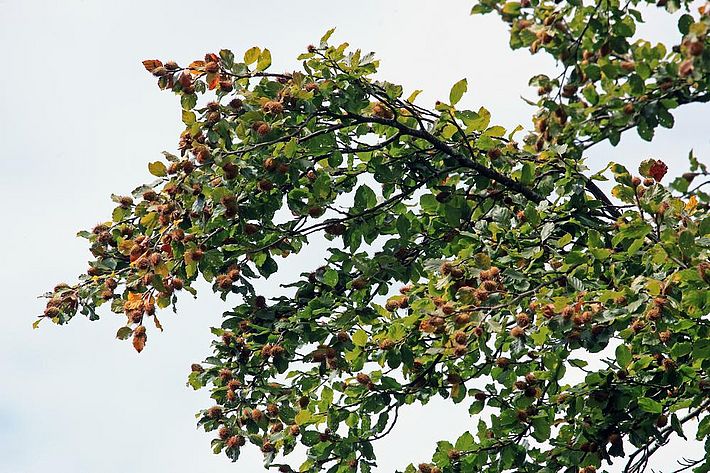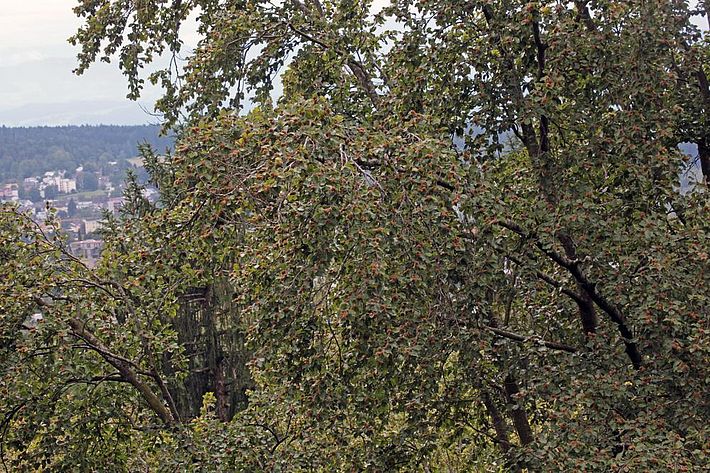Fagus sylvatica L. | F: Hêtre, fayard | I: Faggio comune | R: Fau | D: Rotbuche
General information about the European beech
Beech is the second most common tree species in Switzerland, accounting for 19% of the total number of stems1. It occurs in almost all parts of the country, but is absent in the low-rainfall, continental Alpine valleys of the Lower Engadine, the Val Müstair, and the main valley of the Valais east of Martigny1. It naturally dominates on fresh soils of the colline and montane levels, but rises to 1,400 m a.s.l. and forms the timberline in some places in Ticino1.
Blooming
Beech flowers are unisexual, with the male flowers arranged in a dense, pendulous spike called a "catkin" (Fig. 1). Beech flowers appear at the same time as the leaves and blossom from mid-April to May.
Fruits
The fruits of the beech tree - called beech nuts or beechnuts - are triangular nutlets that sit in twos or rarely in threes in a woody fruit cupule covered with soft spines, the so-called cupula (Fig. 2). The fruits ripen during the summer and are released from the opening fruit cups from mid-September or fall off with them between October and November.
Seed masting behaviour
Beech has a pronounced masting behaviour and produces a large amount of fruit every 2 to 8 years depending on weather, altitude and latitude2,3. Masting phenomena depend on the weather in the two preceding years as well as during the flowering period in spring3.
Assessment of seed mast
Time: August to mid-September. The fruit cups enclosing the seeds turn brown in the course of the summer and are then easiest to distinguish from the foliage. With binoculars, the intensity of the beech mast can then be assessed even from a greater distance.
Assessment of fruiting: Seed masting is a phenomenon that does not affect the individual tree but encompasses entire stands in a larger geographical area. The intensity of a beech fattening can be assessed according to the following key:
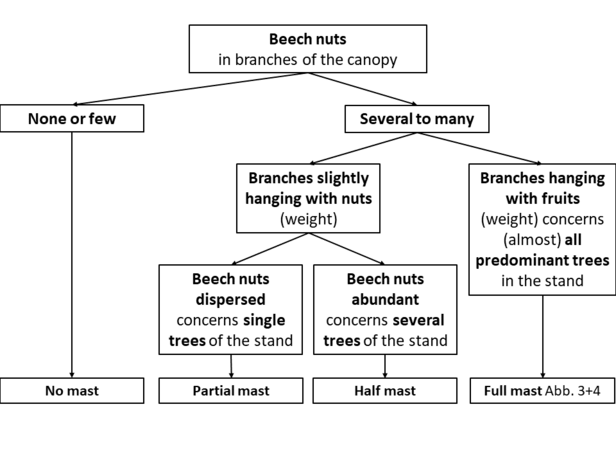
1 Brändli UB (1996) Die häufigsten Waldbäume der Schweiz. Ber. Eidg. Forsch.anst. Wald Schnee Landsch. 342
2 Burri A, Burkart A, Moritzi M, Moser B, Wasem U, Wohlgemuth T (2016) Samenproduktion bei Waldbäumen: eine neue Webseite. Zürcher Wald 1/16: 23-27
3 Drobyshev I, Niklasson M, Mazerolle M J, Bergeron Y (2014) Reconstruction of a 253-year long mast record of European beech reveals its association with large scale temperature variability and no long-term trend in mast frequencies. Agricultural and Forest Meteorology 192: 9-17
Download
-
Artenblatt Rotbuche 2 MB
